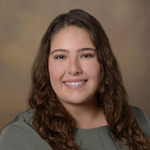WRRC Water Webinars: 104(b) Student Research Presentations

When
Where
Speaker(s)
Low-Energy Inland Brackish Water Desalination

As water shortages become more relevant within the American Southwest, additional reductions from traditional water supplies will occur. As a consequence, to meet the water demand, inland regions will require exploring non-conventional sources to secure their water supply, including brackish groundwater. Arizona has over 600 million acre-feet of brackish groundwater that may be a viable source of potable water using desalination technology. The golden standard for treatment of brackish water is desalination via Reverse Osmosis (RO). However, RO comes with the major drawback of producing high-cost water and large volumes of concentrate to dispose of. Thus, there is a need for low-energy water treatment technologies that are economical, widely accessible, and have low environmental impacts to produce high-quality and cost-effective potable water for all. Nanofiltration (NF) is another pressure-driven membrane process and, compared to RO, consumes less energy while maintaining a high-water flux. Through modeling and pilot testing NF and RO hybrid configurations, we optimize a membrane treatment train to decrease operating pressure, energy consumption, and scale producing ions while analyzing the tradeoffs. These hybrid configurations aim to improve the applicability of desalination in inland regions with the overarching goal of increasing water-energy circularity.
Arianna Quinn Tariqi is a graduate student at the University of Arizona working towards a PhD in Environmental Engineering. She is a National Science Foundation (NSF-GRFP) awardee and is co-advised by Dr. Kerri Hickenbottom and Dr. Vicky Karanikola, working on the optimization of desalination technology. She is wrapping up a project with industry partners from the Yuma Desalting Plant.
Increasing Water Storage in Arid Soils with Biological Applications

For over twenty years, Arizona has experienced extreme drought. As a result, many farmers and ranchers are now required to reduce their water usage by up to forty percent. One way to meet this requirement would be to develop methods for soils to hold more water. Livestock are often viewed as bad for water resources and soil health, but can livestock be a tool for land managers to improve their soils and save water? In this project we partner with a farm in Red Rock, Arizona to study adaptive rotational grazing — a way of grazing livestock that moves herds to new pasture to maintain land and animal health. We test this grazing treatment using control plots in two fields. One field has been unused for over 25 years, and one is in its third year being rotationally grazed. We measure soil carbon and nitrogen content, bulk density, and water infiltration. Results of our study show that rotationally grazed plots have increased levels of organic carbon and nitrogen in the soil and decreased levels of soil bulk density. The less dense the soil is, the more water it can hold. Our results show rotational grazing can help farmers and ranchers decrease their water use. By better understanding how livestock impact the land, we can raise herds sustainably. Our research could also help with flood control, groundwater recharge, and restricted water use.
Dustin Fancher is a master’s student studying Soil and Water Science in the Environmental Science department at the University of Arizona. He is researching soil restoration through biological applications in the Blankinship Microbial Biogeochemistry Group. He earned his BA in Communications at Baylor University and worked for over a decade in Europe as a consultant before returning to the US to pursue his master’s. He is passionate about revitalizing ecosystems and ensuring a sustainable future.

